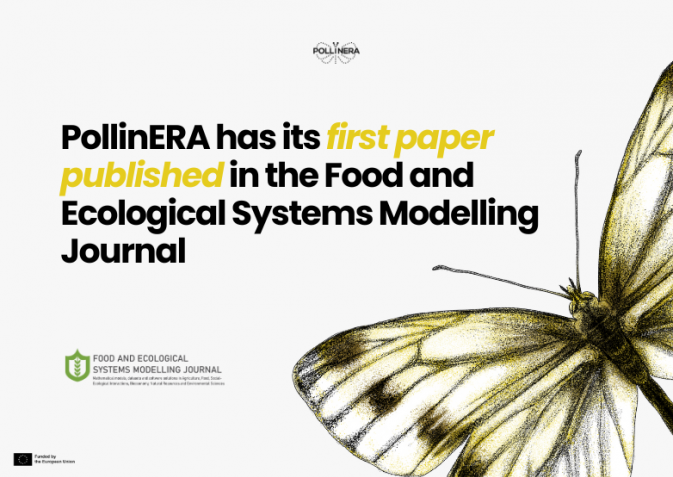Advancing pesticide regulatory ERA for pollinators: PollinERA's first paper published

PollinERA has released its inaugural research results, dedicated to the Formal Model (Topping et al. 2022) for the butterfly Pieris napi (green-veined white) agent-based model in the Animal Landscape and Man Simulation System (ALMaSS). The research, published in the Food and Ecological Systems Modelling Journal (FESMJ), is the first entry in the PollinERA’s newly introduced open-access collection.
This month, Christopher John Topping, project coordinator, and Xiaodong Duan of Aarhus University have published their joint paper “The Formal Model for the butterfly Pieris napi (Lepidoptera, Pieridae) agent-based model in the Animal Landscape and Man Simulation System (ALMaSS)” which presents a description of the model of Pieris napi, the green-veined white, one of the main PollinERA study species that is being assessed during the project. The authors suggest that future iterations of the model should support a systems approach to environmental risk assessment.
Pieris napi is a butterfly species found across different environments. Unlike its close relatives Pieris brassicae and Pieris rapae, it rarely lays eggs in the garden or crop varieties of crucifer. As a result, it is not considered a pest species. Although Pieris napi is a well-studied species, which allows the creation of a relatively detailed and well-founded formal model, there is currently no regulatory model that accurately simulates its life cycle, behaviour, and risks associated with pesticide exposure.
To address this challenge, the study proposes a model for Pieris napi to be integrated into the ALMaSS. The model is designed for inclusion in the ALMaSS (Topping et al. 2003; Topping 2022) and therefore uses the systems and features provided by the framework, in particular highly realistic dynamic landscapes and efficient computation (Topping and Duan (2024a, 2024b)).
The study utilises an agent-based modelling approach (Grimm and Railsback 2005), where each butterfly is represented individually in the simulation. In fact, to achieve high-resolution simulations, the model represents all life stages of the butterfly as individuals, covering their internal development and interactions with each other and the environment. At any point in time, each individual has a particular behavioural state and characteristics such as age, size, location and pesticide loading. By incorporating these characteristics, the model aims to represent the reproduction, mortality, development and movement of Pieris napi within the ALMaSS framework in a detailed manner suitable for potential use in pesticide regulatory environmental risk assessment for pollinators.
While the current model is detailed enough for regulatory assessments, the authors acknowledge the need for further improvements to enhance the model’s accuracy and applicability. For instance, the formal model does not include genetics and includes a toxicological model designed to be extended in future iterations.
In conclusion, the study represents an important step, but, as new data become available from PollinERA, improvements should expand the current model to include sub-lethal effects and more detailed internal toxicology, such as toxicokinetic/toxicodynamic models (TKTD).
For full details, read the published paper here.